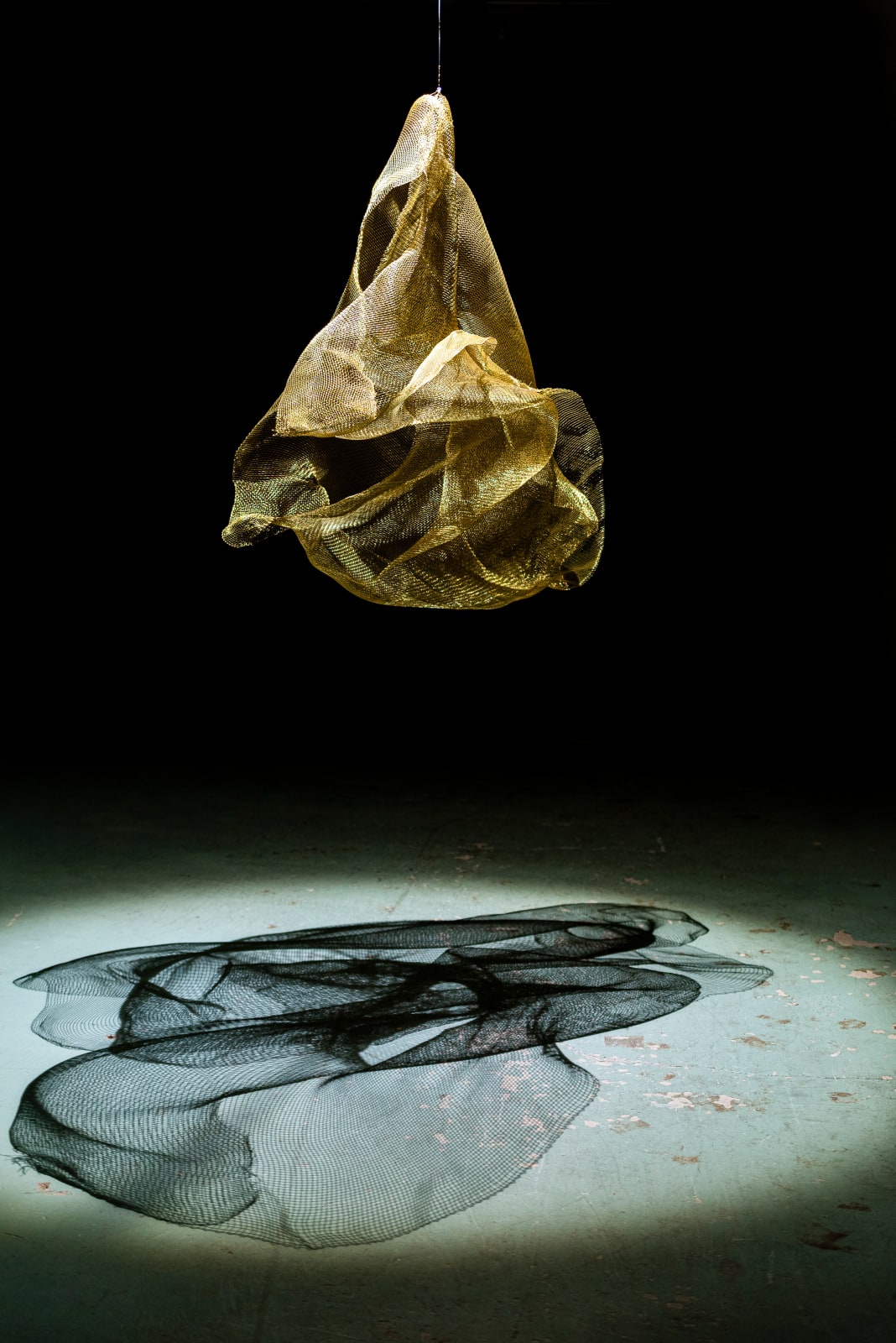Serinyà Catalan-Swedish, b. 1974
Further images
The brass mesh that makes up this installation, was extracted from the walls of a room in the Garnisonen complex. Its origins can be traced back to the military past of this building: the FOA-huset (Försvarets forskningsanstalt/Swedish National Defence Research Institute). The building was constructed in 1963, in the midst of the Cold War. This type of mesh is used for screens to shield against radio frequency radiation, to avoid external interference during sensitive experiments. They are also key components of Sensitive Compartmented Information Facilities, so called SCIF-rooms. These are secure places where classified information can be viewed and discussed whilst preventing surveillance or spying.
When I moved to Sweden, I was surprised to discover a society that had prepared itself for a possible military conflict with Russia. Bomb shelters in apartment buildings, government distributed booklets of advice in case of war, the three o´clock alarm siren (“Hesa Fredrik”) etc. But what really caught my attention was the constant awareness and fear of the always lurking Russian enemy. Its most conspicuous expression being the reports of submarine intrusions on Swedish territory. From 1962 till present day, every now and then, sightings of Russian submarines have been reported. The military deploy their patrols, their helicopters, scan the waters electronically. They have even used depth charge bombs, but no hits or casualties have ever been recorded. The end result is usually just the testimony of a few witnesses, a blurred photograph or a shaky amateur video of the mysterious apparition – a fantastic material for media and public speculation, efficiently enforcing the fear and mystery in a way comparable to other unsolved mysteries, such as the Loch Ness Monster sightings.
The mesh, an interlaced structure, is the perfect symbolic and poetic representation of our times. From the always connected smartphones in our pockets to the Arab Spring revolutions. How to contaminate less or how to build a bomb, are just a click away from everybody. This technological weave connects us while at the same time isolating us more than ever. The invisible powers that control software and technology are not neutral. They belong to governments, to companies, to investors – each one with their own agenda, each one trying to harness, for its own benefit, the intrinsic power of reaching directly into the lives of 5 billion people (⅔ of the world population).
But the mesh is not free from glitches. Sometimes its power overwhelms the ones who believe they actually have control over it. Like the French government, that was directly confronted by the Yellow Vest Movement, a proletarian revolution that used social media as a tool for decentralized efficient organisation. The brass mesh is not only a metallic layer that was used to conceal and protect sensitive information. It is also part of the security structures of this society. Its reason of existence was, or so we believe, to protect the freedom and security of the Swedish citizens. The mesh is everybody, it’s everywhere and it affects everything. Whether it protects us or imprisons us can be a matter of opinion, but mostly it is a matter of choice.











